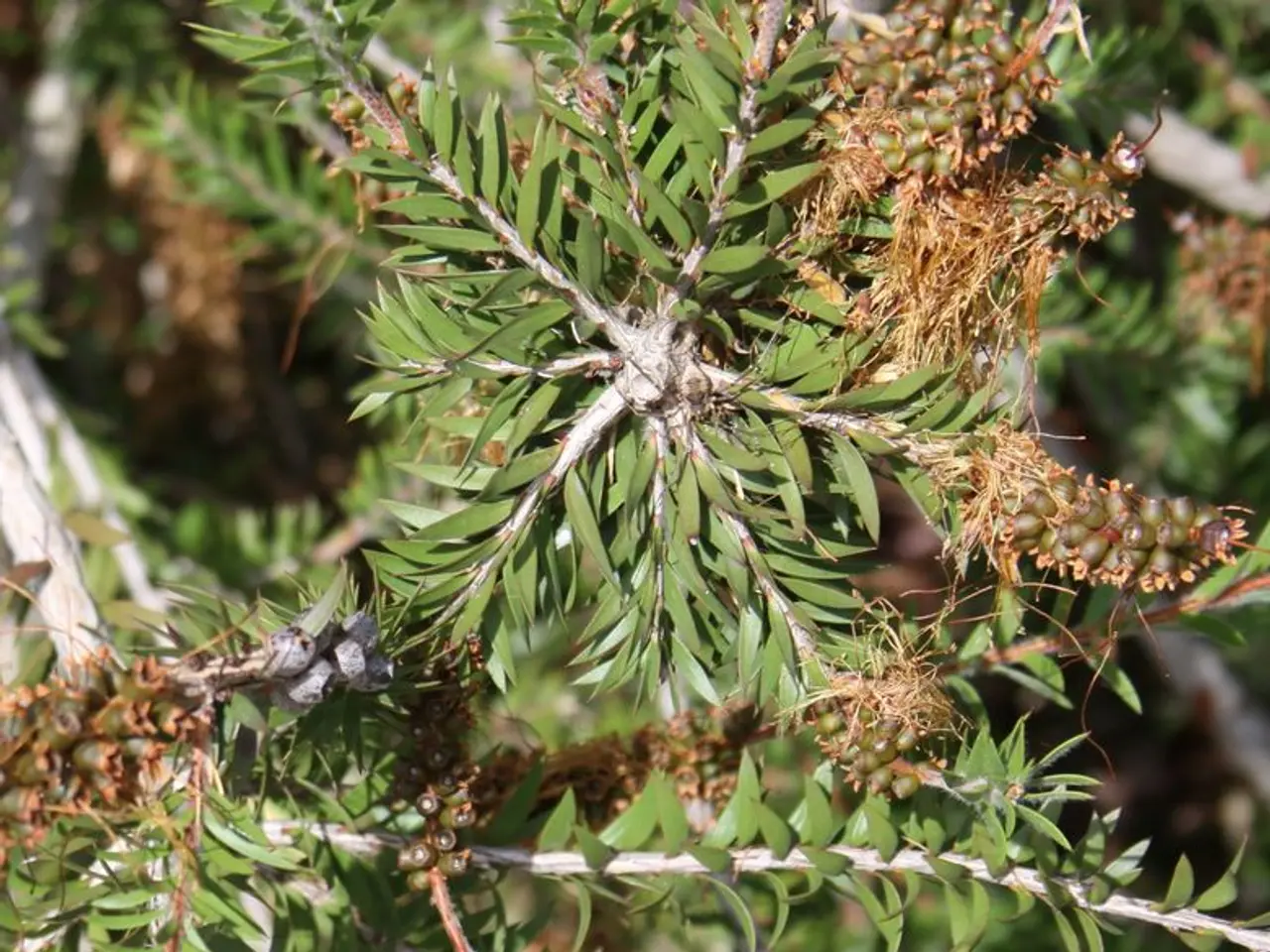Optimal Strategies for Fertilizing Citrus Trees: Essential Guidelines for Citrus Fertilization
Citrus trees, known for their vibrant fruits and refreshing flavours, are popular plants in many gardens. However, these heavy feeders require careful attention to their nutritional needs, especially when it comes to fertilization.
When a soil analysis is not performed, a complete fertilizer with micronutrients is recommended. A balanced fertilizer formula containing nitrogen (N), phosphorus (P), and potassium (K) in ratios such as 6-12-6, 8-8-8, 12-6-6, or 15-5-10, supplemented with essential micronutrients like magnesium, iron, zinc, and sometimes manganese, is suitable.
For optimal growth and fruit production, apply fertilizer during the active growing season, primarily from early spring (February or March) through late summer or early fall (up to September). Avoid or reduce fertilizing during the dormant season (fall and winter), as the tree's nutrient needs decrease, and fertilizing then can stress the tree.
The frequency of fertilization depends on the tree's age and location. Mature outdoor trees typically require three fertilizer applications per year between February and September. Young trees (less than 3 years old) may need more frequent applications (4-5 times during the growing season) with lower nitrogen amounts per application to support establishment. Indoor or container citrus trees benefit from more frequent, lighter feeding every 2-4 weeks during spring and summer, reducing or halting fertilization in winter.
The application technique involves evenly spreading the fertilizer around the tree's drip line (where feeder roots are active), lightly working it into the soil, and watering it in thoroughly to prevent nutrient loss. For container plants, use smaller amounts more often.
Avoid common mistakes such as over-fertilizing, using only nitrogen-rich fertilizers, fertilizing newly planted trees in the first year, or fertilizing during dormancy. Appropriate fertilization can reduce alternate bearing in citrus trees.
In addition to the primary nutrients, micronutrients like zinc and iron are also necessary for citrus trees. If a citrus tree lacks these micronutrients, supply them with a foliar application of a liquid-chelated micronutrient solution as the new growth emerges in the spring. The timing of the feedings depends on the species of fruit and the age of the tree.
In summary, a balanced fertilizer tailored to soil test recommendations, applied throughout the active growth period and adjusted for tree age and planting conditions, supports optimal citrus tree growth and fruit production. Proper fertilization is crucial for these heavy-feeding trees to thrive and produce delicious fruits.
To ensure a thriving home-and-garden lifestyle with a citrus tree, employ a balanced fertilizer formula containing essential nutrients such as nitrogen, phosphorus, and potassium, supplemented with micronutrients like magnesium, iron, zinc, and sometimes manganese. During the active growing season, especially from early spring to late summer or early fall, it's important to apply fertilizer according to the tree's age, following the recommended frequency for optimal growth and fruit production.




